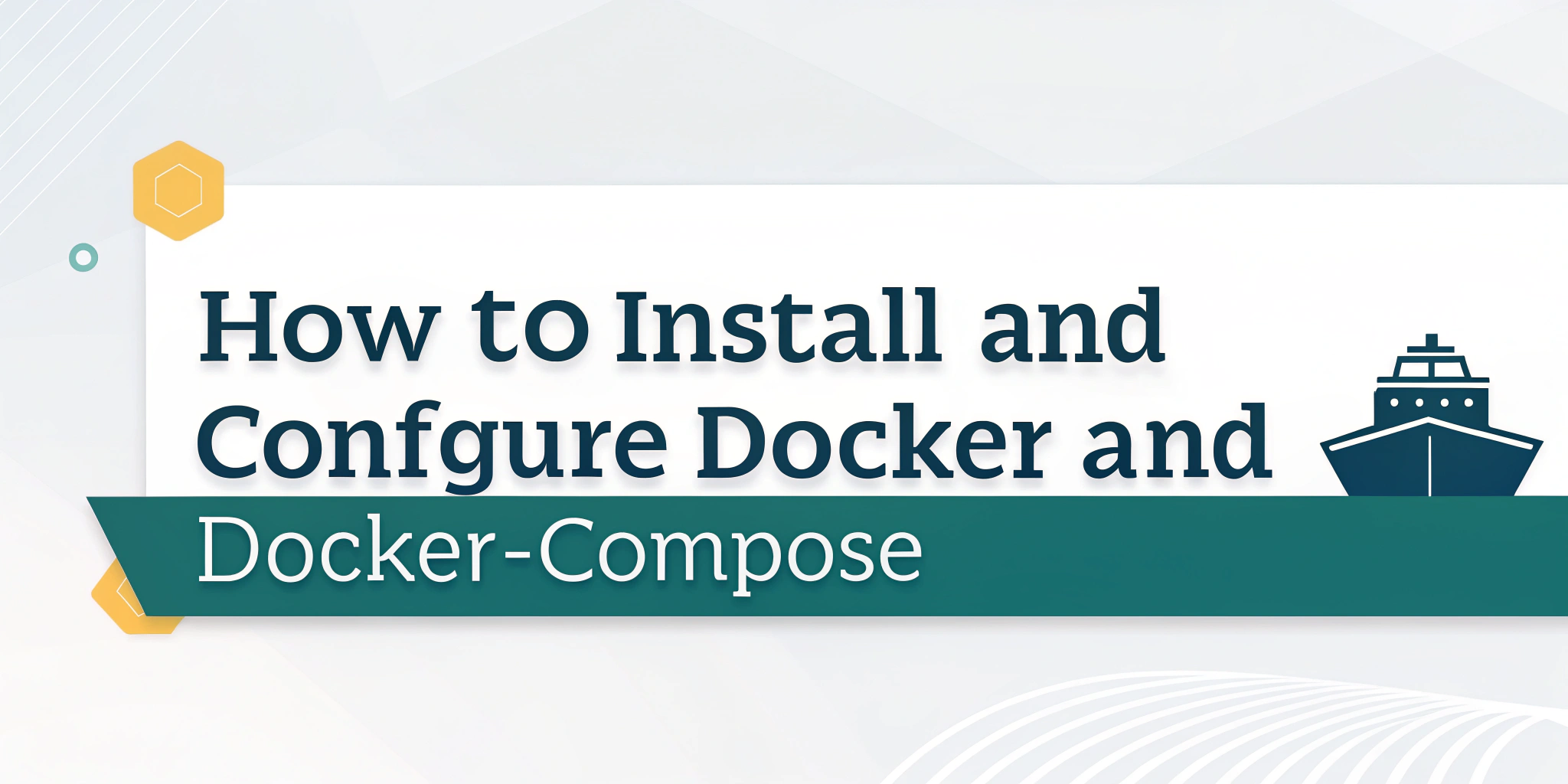
كيفية تثبيت Docker و Docker-compose وتكوينهما
Step-by-Step Guide to Installing Docker and Docker Compose on Your VPS or Root Server
Docker and Docker Compose are powerful tools for running and managing containerized applications. Whether you’re deploying web apps, databases, or microservices, setting them up on a VPS or root server is straightforward. In this guide, I’ll walk you through connecting to your server via SSH using PuTTY, installing Docker and Docker Compose, and configuring them on an Ubuntu or Debian system. Let’s get started!
Prerequisites
Before diving in, ensure you have:
- A VPS or root server running Ubuntu or Debian.
- Root or
sudoaccess to the server. - An internet connection for downloading packages.
- The IP address or domain name of your server.
Step 1: Download and Install PuTTY
If you haven’t already, download PuTTY, a free SSH client for connecting to your server:
- Visit the official PuTTY website.
- Download the installer or standalone
putty.exefor your Windows system. - Install PuTTY (or run the executable directly if using the standalone version).
Step 2: Connect to Your Server via SSH
- Open PuTTY:
- Launch PuTTY from your Start menu or by double-clicking
putty.exe.
- Launch PuTTY from your Start menu or by double-clicking
- Enter Server Details:
- In the “Host Name (or IP address)” field, type your server’s IP address or domain name (e.g.,
192.168.1.1oryourdomain.com). - Ensure the Port is set to
22(default for SSH). - Select SSH as the connection type (default).
- In the “Host Name (or IP address)” field, type your server’s IP address or domain name (e.g.,
- Connect:
- Click the “Open” button (not “OK”, as PuTTY uses “Open” to initiate the connection).
- If prompted with a security alert about the server’s key, click “Accept” to trust the server.
- Log In:
- Enter your username (e.g.,
rootor another user withsudoprivileges). - Type your password when prompted (note: passwords don’t display as you type for security).
- Enter your username (e.g.,
Once logged in, you’ll see a terminal prompt (e.g., root@yourserver:~#).
Step 3: Update Your Server’s Package Lists
To ensure your server has the latest package information:
apt updateThis command refreshes the list of available packages.
Step 4: Upgrade Installed Packages
Install any available updates for existing packages to keep your system secure:
apt upgrade -yThe -y flag automatically confirms the installation, saving you from manual prompts.
Step 5: Install Required Dependency Packages
Install tools and dependencies needed for Docker and future installations:
apt install curl nano git apt-transport-https ca-certificates gnupg2 software-properties-common -yHere’s what these packages do:
curl: Downloads files from the web.nano: A simple text editor.git: Version control system.apt-transport-https,ca-certificates,gnupg2,software-properties-common: Enable secure repository access.
Step 6: Install Docker
Follow these steps to install Docker on your server:
- Add Docker’s GPG Key:
- For Debian:
curl -fsSL https://download.docker.com/linux/debian/gpg | gpg --dearmor -o /usr/share/keyrings/docker-archive-keyring.gpg - For Ubuntu:
curl -fsSL https://download.docker.com/linux/ubuntu/gpg | gpg --dearmor -o /usr/share/keyrings/docker-archive-keyring.gpg
This key ensures the Docker repository is trusted.
- For Debian:
- Add Docker Repository:
- For Debian:
echo "deb [arch=$(dpkg --print-architecture) signed-by=/usr/share/keyrings/docker-archive-keyring.gpg] https://download.docker.com/linux/debian $(lsb_release -cs) stable" | tee /etc/apt/sources.list.d/docker.list - For Ubuntu:
echo "deb [arch=$(dpkg --print-architecture) signed-by=/usr/share/keyrings/docker-archive-keyring.gpg] https://download.docker.com/linux/ubuntu $(lsb_release -cs) stable" | tee /etc/apt/sources.list.d/docker.list
This adds Docker’s official repository to your system.
- For Debian:
- Update Package Lists Again:
apt update - Install Docker:
apt install docker-ce docker-ce-cli -y - Verify Docker Installation:
- Start and enable Docker:
systemctl start docker systemctl enable docker - Check the version:
docker --versionYou should see output like
Docker version 27.3.1, build abc123.
- Start and enable Docker:
- Test Docker:
docker run hello-worldThis pulls and runs a test container, confirming Docker is working.
Step 7: Install Docker Compose
Docker Compose simplifies managing multi-container applications. Install it with these steps:
- Download Docker Compose:
curl -L https://github.com/docker/compose/releases/download/v$(curl -Ls https://www.servercow.de/docker-compose/latest.php)/docker-compose-$(uname -s)-$(uname -m) > /usr/local/bin/docker-composeThis command fetches the latest Docker Compose version dynamically.
- Set Execution Permissions:
chmod +x /usr/local/bin/docker-composeThis makes the Docker Compose binary executable.
- Verify Installation:
docker-compose --versionYou should see output like
Docker Compose version v2.24.5.
Step 8: Navigate to the /opt Directory
To prepare for future projects (e.g., storing Docker Compose files), switch to the /opt directory:
cd /optThe /opt directory is commonly used for optional software and configurations.
Step 9: Optional Configuration and Testing
- Run Docker Without Sudo (Recommended):
Add your user to the
dockergroup to avoid typingsudofor Docker commands:usermod -aG docker $USERLog out and back in (or reconnect via PuTTY) for this to take effect.
- Test Docker Compose:
- Create a sample
docker-compose.ymlfile:nano /opt/docker-compose.yml - Add this content:
version: '3.8' services: web: image: nginx:latest ports: - "8080:80" - Save and exit (
Ctrl+O,Enter,Ctrl+X). - Run the Compose file:
cd /opt docker-compose up -d - Verify the container is running:
docker ps - Open a browser and visit
http://your-server-ip:8080to see the Nginx welcome page. - Stop the containers:
docker-compose down
- Create a sample
- Configure Docker Daemon (Optional):
- Edit Docker’s settings (e.g., for logging limits):
nano /etc/docker/daemon.json - Add:
{ "log-driver": "json-file", "log-opts": { "max-size": "10m", "max-file": "3" } } - Restart Docker:
systemctl restart docker
- Edit Docker’s settings (e.g., for logging limits):
Step 10: Maintenance Tips
- Update Docker:
apt update && apt upgrade docker-ce -y - Update Docker Compose: Repeat Step 7.1 with the latest version.
- Clean Up Unused Resources:
docker system prune -a - Check Logs for Issues:
journalctl -u docker
Conclusion
Congratulations! You’ve connected to your VPS or root server using PuTTY, installed Docker and Docker Compose, and set up a basic configuration. You’re now ready to deploy containerized applications. Try experimenting with Docker Compose files to run databases, web servers, or full-stack apps. If you run into issues or want to explore advanced setups, leave a comment below or reach out!
Happy containerizing!